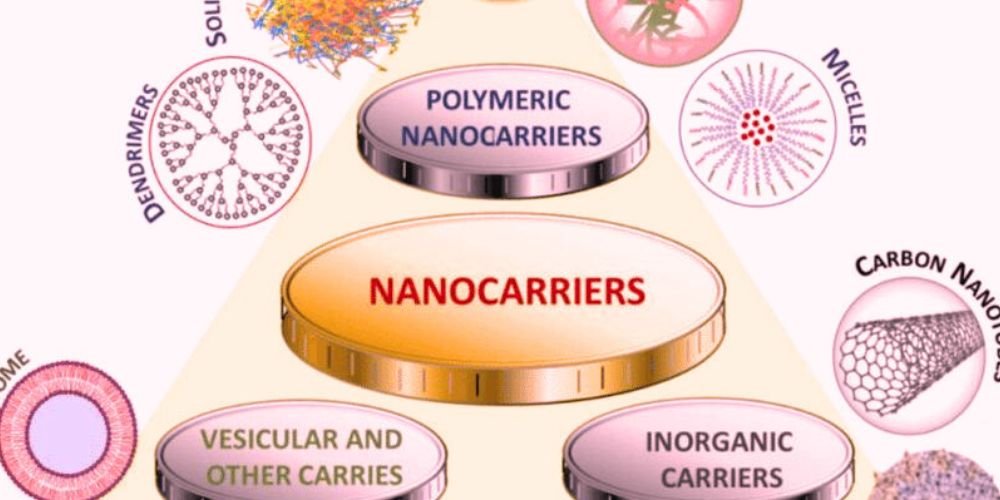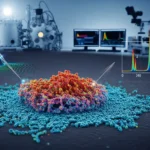In advanced drug delivery and nanomedicine, Nanocarriers have emerged as revolutionary entities, offering a sophisticated means to transport and deliver precise therapeutic payloads. This article delves into the intricate world of Nanocarriers, exploring their significance, diverse types, synthesis methods, and the transformative impact they hold for the future of targeted drug delivery and medical treatments.
Significance of Nanocarriers in Drug Delivery
Nanocarriers play a pivotal role in modern drug delivery, addressing challenges associated with conventional drug administration. Their significance lies in the ability to precisely encapsulate, protect, and deliver therapeutic agents, enhancing drug efficacy while minimizing side effects. Using nanocarriers opens new frontiers in personalized medicine, allowing for targeted delivery to specific cells or tissues and ultimately improving patient outcomes.
Precision Drug Targeting and Reduced Side Effects
One of the key advantages of Nanocarriers is their ability to facilitate precision drug targeting. By encapsulating drugs within nanoscale carriers, therapeutic agents can be directed specifically to the intended site of action, minimizing off-target effects. This precision targeting not only enhances therapeutic efficacy but also reduces the potential for side effects, offering a significant advancement in the field of drug delivery.
Overcoming Biological Barriers
Nanocarriers serve as formidable allies in overcoming biological barriers that hinder the effectiveness of conventional drug delivery. Their nanoscale size allows them to navigate through biological barriers, such as the blood-brain barrier, facilitating the delivery of drugs to previously inaccessible areas. This capability is particularly crucial in treating diseases affecting the central nervous system, where precise drug delivery is challenging yet essential.
Types of Nanocarriers
Nanocarriers come in various forms, each tailored for specific therapeutic applications. Understanding the diverse types of Nanocarriers provides insights into their unique properties and versatility in delivering a wide range of therapeutic payloads.
Liposomes: Versatile Spheres of Drug Delivery
Liposomes, lipid-based vesicles, are among the most versatile Nanocarriers. Their amphiphilic nature allows them to encapsulate hydrophobic and hydrophilic drugs, offering a broad range of therapeutic applications. Liposomes are known for their biocompatibility and ability to improve drug solubility, making them valuable carriers for anticancer drugs, antibiotics, and other therapeutic agents.
Polymeric Nanoparticles: Tailored Drug Release
Polymeric Nanoparticles, constructed from biodegradable polymers, provide a platform for tailored drug release. These Nanocarriers offer control over drug release kinetics, enabling sustained or triggered release profiles. Polymeric Nanoparticles are employed in cancer therapy, gene delivery, and vaccines, showcasing their adaptability for diverse therapeutic strategies.
Dendrimers: Precision Macromolecular Delivery
Dendrimers, branched macromolecules, excel in precision drug delivery due to their well-defined structure and controllable size. Their ability to carry drugs at multiple functional groups allows multifunctional therapeutic applications. Dendrimers are explored in targeted cancer therapy, imaging, and diagnostics, leveraging their unique properties for enhanced treatment modalities.
Synthesis Methods for Nanocarriers
The synthesis of Nanocarriers involves intricate processes that dictate their size, composition, and properties. Various methods, from bottom-up approaches to self-assembly techniques, are employed to craft Nanocarriers with specific characteristics suitable for diverse therapeutic needs.
Bottom-Up Approaches: Building from the Nanoscale Up
Bottom-up synthesis methods involve building Nanocarriers from molecular or nanoscale components. Techniques such as nanoprecipitation and emulsion polymerization allow for precise control over the size and composition of Nanocarriers. Bottom-up approaches are essential for tailoring Nanocarriers to encapsulate specific drugs and achieve desired release profiles.
Self-Assembly Techniques: Crafting Nanocarriers from Components
Self-assembly techniques harness the inherent properties of molecules to form Nanocarriers spontaneously. This method includes amphiphilic molecules that assemble into vesicles or micelles. Self-assembly provides a simple yet powerful means to create Nanocarriers with well-defined structures suitable for encapsulating various therapeutic agents.
Applications of Nanocarriers in Medicine
The versatility of Nanocarriers extends to various medical applications, transforming the landscape of drug delivery and therapeutic interventions. Examining these applications sheds light on the profound impact Nanocarriers have on improving the effectiveness of treatments across different medical domains.
Cancer Therapy: Targeted Precision for Tumor Cells
In cancer therapy, Nanocarriers revolutionize drug delivery by enabling targeted precision for tumor cells. By enhancing drug accumulation in cancerous tissues while minimizing exposure to healthy cells, Nanocarriers contribute to more effective and less toxic cancer treatments. This targeted approach is a paradigm shift in oncology, offering new hope for improved patient outcomes.
Gene Delivery: Unlocking the Potential of Gene Therapies
Nanocarriers play a crucial role in gene delivery, a field with immense potential for treating genetic disorders and diseases at the genetic level. Nanocarriers protect and deliver genetic material to target cells, opening avenues for personalized medicine and innovative gene therapies. This application holds promise for addressing previously untreatable conditions by correcting genetic anomalies.
Vaccines and Immunotherapy: Enhancing Immune Responses
Nanocarriers contribute to the field of vaccines and immunotherapy by enhancing the delivery of antigens and therapeutic agents to immune cells. Tailoring Nanocarriers for specific immune responses enables the development of more potent vaccines and immunotherapeutic strategies. This application showcases the adaptability of Nanocarriers in harnessing the body’s immune system for disease prevention and treatment.
Challenges and Future Perspectives
While Nanocarriers present groundbreaking opportunities, challenges such as stability, scalability, and long-term safety need to be addressed for widespread clinical translation. Future perspectives involve overcoming these challenges and exploring emerging technologies to unlock the full potential of Nanocarriers in the evolving landscape of nanomedicine.
Achieving Long-Term Stability
Ensuring the long-term stability of Nanocarriers is crucial for their successful translation into clinical applications. Factors such as storage conditions, material degradation, and potential interactions with biological fluids pose challenges researchers are actively addressing. Innovations in stabilizing Nanocarriers will be key to their reliability over extended periods.
Scalability for Clinical Translation
Scalability is a critical consideration for the clinical translation of Nanocarriers. Developing scalable manufacturing processes that maintain the integrity and characteristics of Nanocarriers is essential for their widespread adoption in medical treatments. Future efforts may focus on refining production methods to meet the demands of large-scale clinical applications.
Ensuring Safety for Clinical Use
The safety profile of Nanocarriers is a paramount concern for their clinical use. Researchers are diligently working to understand the long-term effects, potential toxicity, and immune responses associated with Nanocarrier-based therapeutics. Addressing these safety concerns is fundamental to securing regulatory approval and ensuring the well-being of patients.
Exploring Emerging Technologies
Future perspectives for Nanocarriers involve exploring emerging technologies that can further enhance their capabilities. Advancements in nanotechnology, materials science, and imaging techniques will likely contribute to developing next-generation Nanocarriers with improved functionality and versatility. Continued research and collaboration across disciplines will drive innovation in the field.
Conclusion
Nanocarriers stand at the forefront of a transformative era in drug delivery and nanomedicine, offering unparalleled precision and efficacy in therapeutic interventions. Their significance in targeting specific cells, overcoming biological barriers, and revolutionizing treatment modalities positions Nanocarriers as indispensable tools in the future of medicine. As researchers navigate challenges and explore new frontiers, the potential of Nanocarriers to redefine healthcare and improve patient outcomes remains a promise in the dynamic landscape of medical science.





